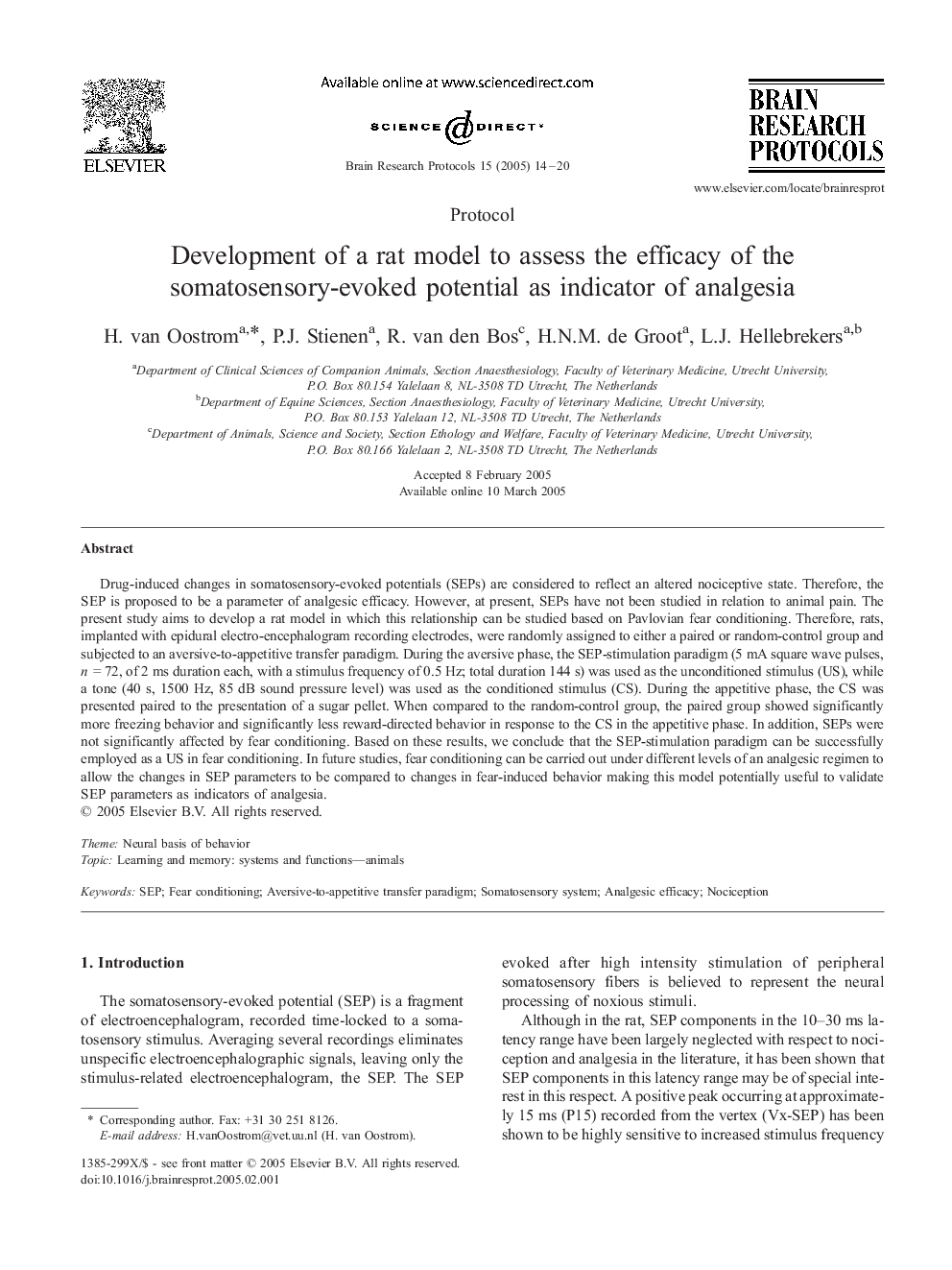| Article ID | Journal | Published Year | Pages | File Type |
|---|---|---|---|---|
| 9422700 | Brain Research Protocols | 2005 | 7 Pages |
Abstract
Drug-induced changes in somatosensory-evoked potentials (SEPs) are considered to reflect an altered nociceptive state. Therefore, the SEP is proposed to be a parameter of analgesic efficacy. However, at present, SEPs have not been studied in relation to animal pain. The present study aims to develop a rat model in which this relationship can be studied based on Pavlovian fear conditioning. Therefore, rats, implanted with epidural electro-encephalogram recording electrodes, were randomly assigned to either a paired or random-control group and subjected to an aversive-to-appetitive transfer paradigm. During the aversive phase, the SEP-stimulation paradigm (5 mA square wave pulses, n = 72, of 2 ms duration each, with a stimulus frequency of 0.5 Hz; total duration 144 s) was used as the unconditioned stimulus (US), while a tone (40 s, 1500 Hz, 85 dB sound pressure level) was used as the conditioned stimulus (CS). During the appetitive phase, the CS was presented paired to the presentation of a sugar pellet. When compared to the random-control group, the paired group showed significantly more freezing behavior and significantly less reward-directed behavior in response to the CS in the appetitive phase. In addition, SEPs were not significantly affected by fear conditioning. Based on these results, we conclude that the SEP-stimulation paradigm can be successfully employed as a US in fear conditioning. In future studies, fear conditioning can be carried out under different levels of an analgesic regimen to allow the changes in SEP parameters to be compared to changes in fear-induced behavior making this model potentially useful to validate SEP parameters as indicators of analgesia.
Keywords
Related Topics
Life Sciences
Neuroscience
Neuroscience (General)
Authors
H. van Oostrom, P.J. Stienen, R. van den Bos, H.N.M. de Groot, L.J. Hellebrekers,
